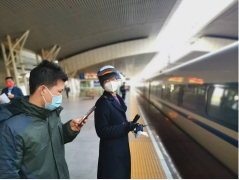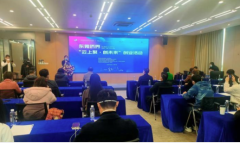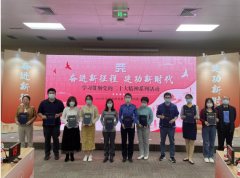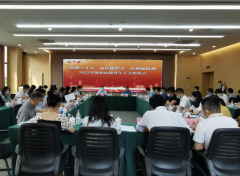如何看待职场中小团体抱团现象 是抱团取暖还是作茧自缚?
原标题:在职场搞小团体,是抱团取暖还是作茧自缚?|双语哈评
小佛爷说
小团体在组织中很常见。在小团体中工作可以提升归属感、凝聚力和业内接受度。不过,不同小团体产生的影响不同,有些可以激发创新,而另一些则可能引起分裂和两极分化。我们在特定小团体中工作的时间越长,彼此的相似之处就越多,最终会强化固定思维。领导者有必要削弱小团体之间的界限,打破固步自封的现象。

当一种态度、习惯或信仰太过根深蒂固,从“我相信”演变为“这就是我”时,固步自封的情况便会发生,导致团队和组织内部出现两极分化。当前环境中,政治分歧和社会运动渗透到职场互动,许多员工在远程工作,这为固步自封思想的形成创造了“理想”条件。
在组织中,固步自封的前兆通常是组织或团队个体开始把自己和别人分成小团体。当小团体成员相信他们拥有相同的特定观点时,固守现象就会出现。这类固步自封是基于“我们和他们”认知的割裂,无论这种割裂是否真实存在。根深蒂固的割裂通常被视为一种存在状态——僵化、稳定、不易改变。最重要的是,它们通常具有意识形态上的意义,这就是问题根源。
固步自封的情况在生活中随处可见。在美国,我们经常听到立法者无法合作立法,因为他们固守着越来越两极分化的立场。商业媒体上充斥着失败的并购故事,因为试图融合文化和团队的领导者,仍固守原有的领导方式和“自身团队”的工作方式。
对于只想完成自己工作的人来说,当其他团队的人(会计、营销人员、领导)对问题的看法根深蒂固时,我们有多少次会半途而废呢?为防止或改善这些割裂,领导者首先必须了解正在发挥作用的分歧力量,然后采用旨在鼓励同理心和认同他人的策略,以弥合小团体之间的裂痕。困难时期,破除固步自封的心理变得更为重要。
固步自封的悖论
数十年的研究表明,小团体之间已知的割裂有时被称为“断层线”,会增加冲突的负面形式,不利于公开沟通、团队承诺、创新和绩效。小团体感越深,其间的鸿沟就越难跨越,越不容易考虑其他观点。不出所料,这会导致更深层的两极分化,并对整个团队产生更糟的影响。
话虽如此,固步自封也并非全无好处。小团体自身非常乐于共事。在一个界限难以逾越的小团体中工作可以提升归属感、凝聚力和业内接受度。例如,营销人员和会计在一起工作可能会产生很多问题,因为不同群体接受的培训不同,有自己的行业术语。但也因为如此,他们喜欢在自己的团体内互动。
组织领导者可以利用小团体的优势,同时避免固步自封的潜在陷阱。在建立跨越分歧的桥梁并以更积极的方式调动小团体之前,第一步是要理解发挥作用的关键分裂力量。
识别固守思想
首先,领导者必须敏锐地察觉到在团队中潜在(或实际存在)的割裂,这种割裂可能基于不同的特质和身份。不同小团体产生的影响不同——有些可以激发创新和建设性冲突,而另一些则可能引起分裂和两极分化。以下因素可以用于识别小团体的类型:
所处空间。团队成员会因为所处条件,对互动产生不同的满足感,从而对同一事物产生不同体验。例如,在混合型团队中,远程成员可能不像在同一地点共事的成员那样经常或积极地参与团队互动,这就形成了天然的断层线。对于在同一地点工作的人来说,分享非正式和非语言的行为可以让成员迅速找到共同点,并开展私人对话,最终形成信息共享、信任和对行动计划贡献程度各不相同的小团体。
表面特征。其中包括性别、种族、年龄和语言。基于这些特征的小团体最容易在面对面的环境中形成,因为彼此的相似性非常明显。此类小团体通常会指向消极结果,因为来自一个小团体的个体会基于与表面特征相关的刻板印象等因素,去推断并假设其他个人或小团体的价值观。这些假设会令不同小团体在沟通中产生抵触和受挫情绪,最终导致更多冲突,拉低绩效水平。
知识背景。教育和工作背景、工作经验和专业知识等因素使人们倾向于以特定的方式或思维模式进行沟通。例如,在产品开发中,营销人员与研发团队的关注点可能非常不同。尽管如此,在杰出领导者的带领下,他们会受益于理解他人和挑战自身的思维模式,与这类小团体接触很大几率可以收获积极结果。
深层身份认知。我们的价值观、信仰、宗教和道德观念是最有可能产生分歧的地方,因为这是基于我们对自己和世界的核心设定。我们会在面对理念不同的人时感受到威胁。这类小团体通常需要更长时间才能看出来,然而,当政治分歧和社会运动渗透到职场互动时,矛盾就藏于其中。这些小团体一旦出现,就很容易抱团和分化,对团队的结果产生破坏性影响。
其次,观察团队成员在现实和虚拟世界中的互动情况,从而辨别小团队成员。问问自己:谁在和谁说话?哪怕是正在讨论的想法,谁与谁结了盟,谁又在不断反对谁?谁会在虚拟会议中一起聊天,谁会在另一个群体的人讲话时关掉自己的摄像头?谁会参与非正式互动,比如茶歇讨论或内部玩笑?这些互动模式可以提供重要线索,关于小团体是否存在、谁可能是其中一员,以及他们共享的信息或特质是什么。
第三,要注意的是,当团队中出现小团体时,团队领导者很可能由于人口属性、知识、经验和价值观,更倾向于一个小团体(没有明显表现出来)。这种一致性,加上领导者的影响力,有可能改变这些小团体的互动方式。
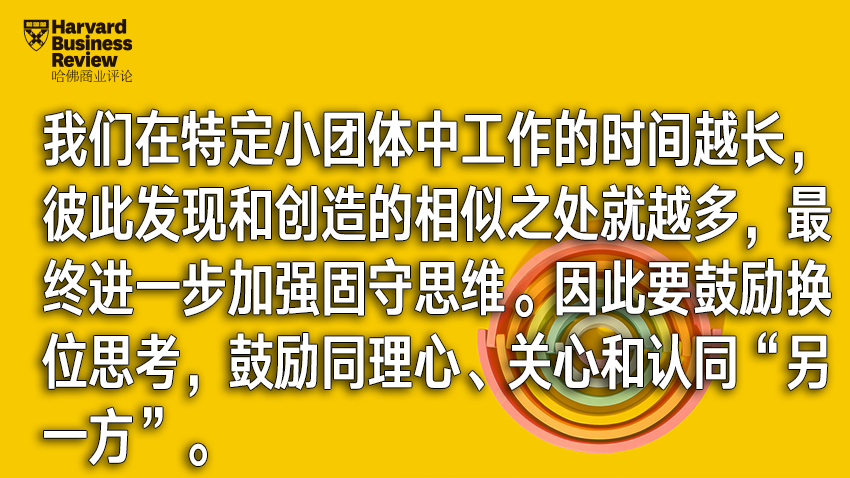
如何抵制固步自封
从小团体形成的一刻起,它就开创了自己的历史——一种共有的身份和亚文化,有成功也有失败,有时甚至是强烈的个人情感体验——即使这种互动纯粹是虚拟的。我们的研究指出,我们在特定小团体中工作的时间越长,彼此发现和创造的相似之处就越多,最终进一步加强固守思维。
领导者可以采取几种策略以削弱小团体之间的界限,打破固步自封的现象。这些策略的核心不仅是鼓励换位思考,还鼓励同理心、关心和认同“另一方”。
改变现状。对团队成员进行洗牌(例如轮岗或项目分配),调换工位,有意在会议中分散线上和在同一地点工作的员工,引入有不同经验和背景的新团队成员,这些都有助于打破现有的团队壁垒。这些行为提供了一个质疑“这里做事规则”的机会,但要注意的是,这也会让扎根于紧密团队关系中的人感到孤独、迷茫,哀悼自己失去了一个有意义的团队身份。为了避免这种情况,领导者需要以积极的方式为团队重组进行预热——例如,“为帮助团队更快实现目标,我们正在做资源重组。”
关注共同的目标和对手。通过外部衡量,重新强调整个团队共同的初心和目标以及其紧迫性。例如,给两个部门分配一个复杂的合作项目,或者指派不同团队的成员共同完成具有挑战性的新任务,这有助于给不同群体提供共同目标和愿景,凌驾于分歧之上。如果这还不足以消弭根深蒂固的裂痕,那么锁定一个共同对手(如竞争公司的对手团队),有助于鼓励两个团队齐心协力,共同合作。重要的是要监控对立过程中可能出现的负面情绪,确保良性竞争。
共度时光。为了找到与其他团体成员的共同点,大家需要在一起度过正式和非正式时间。这期间发现的共同点可以帮助成员与其他组的人产生认同感——例如,团队中一名女性和男性有可能都为人父母。这在远程工作时比较困难,因此需要有意识地组织非正式互动,你可以在每次会议开始时要求每个人分享自己的成果或挑战。非正式的联系时间同样重要。我们可以在工作时间举行非正式碰头会,以免员工把它当成漫长工作时间外的额外加码。
调动建立联系之人。当小团体的固步自封程度已经根深蒂固时,引入“跨边界者”或可以跨越边界但仍然被视为“我们中的一员”的人(例如,通过不同身份融入多个群体)或许有用。研究表明,跨边界者可以充当不同群体之间的文化掮客——他们可以“说两种话语”,被每个群体接受,并在减少封闭思维和两极分化方面发挥积极作用。
尝试角色扮演和悖论心态。角色扮演是尝试不同身份和心态的过程。举例来说,如果你和员工与其他人换位思考,会如何度过一天?当你在工作中面对“他人的观点”时,尽可能反思并挑战你对正确做法的核心假设,以及这些观点可能基于的价值观。让团队成员自己思考一下:如果我是另一个团体的成员,生活会是怎样,会是什么感觉?站在他们的角度,我会如何看待自己的团队、部门或利益集团?在探讨一个决定时,让小团体的成员试着站在另一个团队的角度做出回应。学会采纳和实践悖论的心态,让个人真正把自己视为双方的成员,并从不同群体间的紧张关系中汲取能量,也有助于支持这一过程。
在道德观和价值观受到考验和挑战的困难时期,最不费力的方法就是固守安全区,呼应和宽慰我们的观点、价值观和团体。但是,为了创建和赋能一个高效的团队和组织,领导者需要学会架起沟通的桥梁。
关键词:领导力
雪莉·撒切尔(Sherry M.B. Thatcher)艾莉森·梅斯特(Alyson Meister)|文
雪莉·撒切尔是南卡罗来纳大学达拉·摩尔商学院企业管理专业教席教授。她专注于与断层线、身份和冲突相关的团队绩效研究,目前担任《管理学会评论》(the Academy of Management Review)主编和管理部门的主席。艾莉森·梅斯特是瑞士洛桑国际管理发展学院(IMD)领导力与组织行为学的教授。她专注于全球导向、适应性和包容性组织发展研究,曾与数千名高管、团队和组织合作,提供专业服务及工业产品与技术。她对组织中的身份和多样性、领导力和团队动态变化的研究曾发布于多个顶级渠道。
柴茁| 译 刘隽 | 校 孙燕| 编辑
英文原文
Entrenchment happens when an attitude, habit, or belief becomes so firmly established that it morphs from “what I believe” into “who I am,” and it can lead to polarization within teams and organizations. The current environment, where political divides and social movements permeate workplace interactions and many employees are working remotely, can create ideal conditions for entrenchment to take hold.
In organizations, we often see the beginnings of entrenchment in groups and teams when individuals categorize themselves and others into subgroups. Subgroup entrenchment happens when group members believe that there are clear clusters of team members who have shared, specific views. This type of entrenchment is based on perceptions that a division between “us and them” exists, regardless of whether it actually does. Entrenched divisions are often seen as a state of being — that they’re fixed, stable, and not fluid. Most importantly, they’re often imbued with ideological significance, and this is where problems arise.
We’re surrounded by entrenchment. In the U.S., we constantly hear of lawmakers unable to pass collaborative legislation because they’re entrenched in increasingly polarized positions. Stories of failed mergers and acquisitions populate the business press, as leaders attempting to blend cultures and groups remain entrenched in their way of leading and “their” group’s ways of working. And for those of us just trying to complete our own work, how often have we been derailed when other groups of people (those accountants, those marketing folks, thoseleaders) were entrenched in their view of the problem?To prevent or fight against these divisions, leaders first have to understand the divisive forces at play. Then, they can employ a few strategies aimed at encouraging empathy and identifying with others to help weaken the boundaries between subgroups. Resisting entrenchment is even more important in difficult times.
The Paradox of Entrenchment
Decades of research show that the perceived divisions across subgroups, sometimes called “faultlines,” can increase negative forms of conflict and decrease open communication, team commitment, innovation, and performance. The more entrenched subgroups feel, the harder it is to see across the divide and consider the perspective of the “other.” Unsurprisingly, this leads to higher potential for increased polarization and worse outcomes for the overall team.
That said, there’s an upside to entrenchment. The subgroups themselves can be quite content working together. Working in a small team with impenetrable boundaries can increase a sense of belonging, cohesion, and implicit acceptance. For example, marketers and accountants may have trouble working together, as each subgroup has different training and an implicit language, but enjoy interacting within their own teams for those same reasons.
Organizational leaders can harness the benefits of subgroups while avoiding the potential pitfalls of entrenchment. Before building bridges across the divides and engaging subgroups in more positive ways, the first step is to understand the key divisive forces at play.
How to Spot Entrenchment
First, leaders must be acutely aware of the potential for (or the actual) division in their teams, based on a number of different attributes and identities. Not all subgroup types have the same effect — some can fuel innovation and constructive conflict, while others can be divisive and trigger polarization. Look out for subgroup types based on the following factors:
Spatial presence. Team members experience shared events differently depending on their location and the richness of interaction it allows. For example, in hybrid teams, remote team members may not be able to participate in group interactions as often or as vigorously as those who are co-located, creating a natural faultline. For those who are co-located, sharing informal and nonverbal behaviors allows members to quickly find things they have in common and hold side conversations, which can result in subgroups with different levels of shared information, trust, and commitment to plans of action.
Surface-level characteristics. These are factors like gender, race, age, and language. Subgroups based on these characteristics form most readily in face-to-face environments because similarity to other members is readily apparent. These subgroup types are generally associated with negative outcomes, as individuals from one subgroup infer and assume values of the other person or subgroup — for example, based on stereotypes associated with superficial characteristics. These assumptions cause reluctance and frustration in communicating across subgroups that ultimately results in more conflict and lower levels of performance.
Knowledge bases. Things like educational and functional background, previous work experience, and expertise predispose people to communicate in certain ways or to have certain mindsets. For example, in product development, the concerns of marketers may be very different from the concerns of the R&D team. Despite this, with good leadership, they’ll benefit from making the effort to understand one another and challenge their thinking, and this type of subgroup engagement is likely to lead to a positive outcome.
Deep-level identities. Our values, beliefs, religion, and ideas aboutmorality pose the greatest risk of divisiveness because they’re based on our core assumptions about ourselves and the world, and being confronted with others who don’t share them can feel threatening. These subgroups typically take longer to emerge, yet in times where political divides and social movements permeate workplace interactions, the divisions lurk closely beneath the surface. Once these subgroups manifest, they’re likely to be easily entrenched and polarizing and can have destructive effects on team outcomes.
Second, observe how team members engage and interact with one another in both the physical and virtual worlds to uncover who might be part of various subgroups. Ask yourself: Who talks to whom? Who aligns or continually disagrees with whom — despite the idea being discussed? Who chats together during virtual meetings or turns off their camera when someone from the other group is speaking? Who engages in informal interactions such as coffee discussions or inside jokes? These patterns of interaction offer important cues about whether subgroups exist, who might be aligned, and what information or attributes they’re aligned on.
Third, be mindful that, when subgroups emerge within a team, it’s likely that the team’s leader, by virtue of their demographic attributes, knowledge, experience, and values, is more aligned with one subgroup over the others (which may not be obvious at first glance). This alignment, coupled with the leader’s influence, has the potential to shape how these subgroups interact.
How to Combat Entrenchment
From the moment a subgroup is formed, it creates a history of its own — a shared identity and subculture that contains stories of triumph, loss, and sometimes intense emotional experiences that can be personal in nature — even if the interaction is purely virtual. Our researchhighlights that the longer we work in our particular subgroups, the more similarities we begin to find and create between us, which ultimately strengthens entrenchment.
Leaders can use several strategies to help weaken the boundaries between subgroups in order to resist entrenchment. At the core of these strategies is to encourage not only perspective-taking, but also empathy, care, and identification with the “other side.”
Shake things up. Shuffling around team membership (for example, through job rotation or project allocation), changing up workstation locations, being intentional about breaking out virtual and co-located employees in meetings, and bringing in new team members with different experiences and backgrounds helps break down the perceived divisions of existing groups. These actions offer a chance to question “the way things are done around here,” but be aware that they can also leave those who were once entrenched in bonded teams feeling lonely, disoriented, and grieving a meaningful team identity. To avoid this, pre-frame the team shake-up in a positive way — for example, “We’re moving resources around to help the team meet their goals even more quickly.”
Focus on shared goals and shared adversaries. Reemphasize the overall team’s shared purpose and goals and their urgency by outwardly measuring them. For example, assigning a complex joint project between two departments or assigning members from different subgroups to work together on a new and challenging task helps provide a common goal and purpose that overrides those of the subgroups. If this isn’t enough to dissolve what can feel like fixed divisions, identifying a common adversary (such as a competing company’s counterpart team) can encourage two groups to coalesce with emotion and energy. It’s important to monitor any negative emotions that might emerge toward that adversary to ensure that they’re perceived as healthy competition.
Spend time together. To find things in common with members of other subgroups, people need to spend both formal and informal time together. Points of similarity found here can help members identify with those on the other side — for example, maybe both a woman and a man on a team are parents. This is more difficult in times of remote work, so you need to be intentional about organizing informal interactions. You might begin each meeting with a request that each person share a personal win or challenge. Informal connection time also needs to be regarded as important. Hold informal work meetups during business hours so employees don’t feel like they’re adding more virtual hours to their already long days.
Engage bridge builders. When groups are deeply entrenched, it may be useful to engage “boundary spanners,” or people who can cross boundaries and still be seen as “one of us” (for example, by sharing several identities with multiple groups). Research shows that boundary spanners can act as cultural brokers between different groups — they can “speak both languages” and be accepted by each group and actively play a role in reducing entrenchment and polarization.
Experiment with identity play and paradox mindset. Identity playis a process of experimenting with different identities and the mindsets that accompany them. For example, how might you and your employees experience living a day in someone else’s shoes? When confronted with your “view of the other” at work, as often as possible, reflect on and challenge your core assumptions of what’s right and the values on which those views may be based. Ask your team members to consider for themselves: What if I were one of the members of the other subgroup? What would life look like, feel like? How would I see my own team or division or interest group through their eyes? When debating a decision, ask subgroup members to practice responding as if they belong to the other subgroup. Learning to adopt and practice a paradox mindset where individuals can truly see themselves as members of both sides and derive energy from the tensions between them can support this process as well.
In difficult times, where our morals and values are tested and challenged, the path of least resistance is to become entrenched in the safety and comfort our views, values, and groups. To create and empower a high-performing team and organization, leaders need to learn to become bridge builders.

